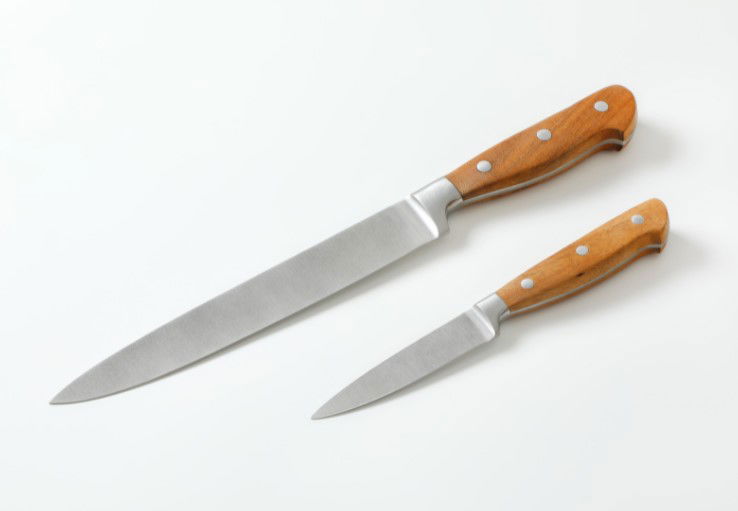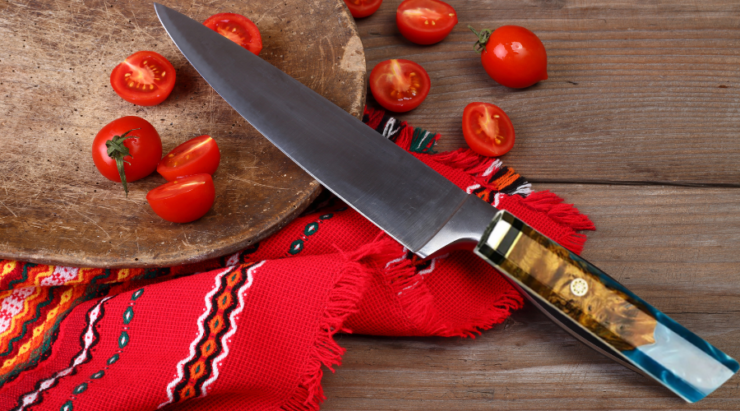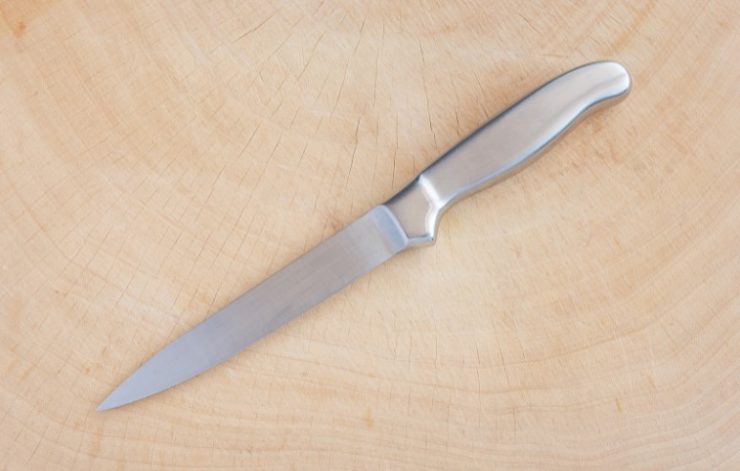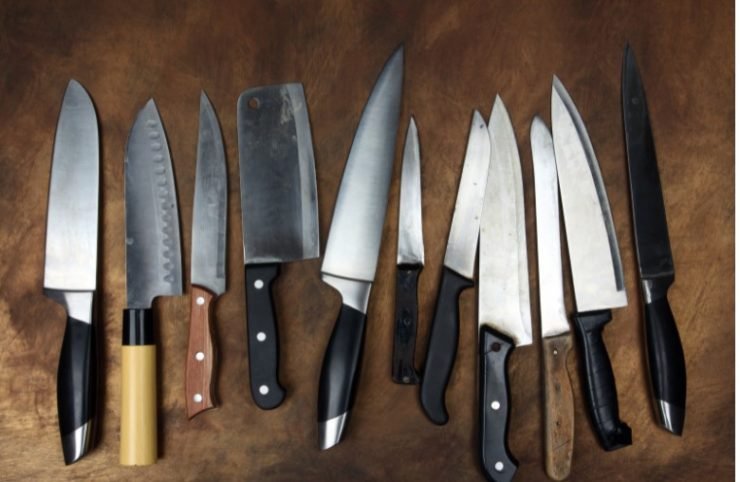The blade of a knife is the star of the show. They’re given incredible attention to detail by master craftsmen, and honed to a razor edge. But how useful would a blade be without its handle?
Past a certain level of quality, most blades will be very similar. So it’s down to the handle to determine which brand of knife is really the best (and most comfortable) for you.
I’ve obsessed over knife handles in my 10 or so years of working in and around kitchens. But once I started making my own knives, my appreciation for a well-made handle grew to even greater proportions.
That’s why I’m excited to share this kitchen knife handle primer with you. I’ll cover why the handle is more important than you think, types of handle materials, handle shapes, and the best way to care for your knife handles. By the time you’re finished, I hope you’ll care about your knife’s handle as much as I do!
In This Article
Why Does A Knife’s Handle Matter?
The ideal knife has three components:
- A sharp, durable blade
- A safe, comfortable handle
- Great balance
If any of these elements are missing, you’ll end up with a less-than-stellar knife experience.
So why does the handle get less attention than the blade? Because if you’re not using your knife for a long time, you may not notice whether it’s comfortable or not. It’s only when you have a whole day of cooking and cutting ahead of you that you’ll really see how important the handle is.
The handle material and shape also contribute a lot to a knife’s safety. That’s why most knife makers prefer non-slip handles — they’re great at preventing accidents while you cook.
In short: A knife’s handle is what will keep you safe and comfortable during long days in the kitchen.
Types of Knife Handle Materials
Every knife handle material has its own strengths and weaknesses. Let’s take a closer look at each of them, with an eye towards deciding which is best for you.
Wood

Natural hardwood is the most traditional handle material used for kitchen knives. It’s also quite attractive, making it a highly sought-after material for discerning chefs.
Most wood handles are naturally non-slip and tend to provide excellent balance for a knife. That’s another reason why professional chefs choose hardwood handles more often than any other material.
On the downside, wood handles are also the most expensive you’ll find. They require more care and maintenance than any other handle type, too. So their good looks and balance require a tradeoff of greater investment of your time and money.
Composite

Made of resin and wood or other natural materials, composite handles strike a balance between aesthetics and affordability. They offer the same natural non-slip and good looks of hardwood handles. But they’re often available at about half the price.
Composite handles are sometimes criticized for giving a wood look without wood’s balancing effect, though. The resin component can change the overall balance of the knife. And some chefs report that composite handles aren’t as durable as hardwood, being more prone to chipping and cracking.
Plastic

Plastic handles are the least expensive material of all. They’re also the most sanitary, and require little to no maintenance. On top of that, they’re the most non-slip of all knife handles.
Even the best plastic handle won’t be as comfortable as a wood or resin handle, though. They’re a favorite of commercial kitchens, where sanitation and affordability are more important than comfort or good looks.
Stainless Steel

Stainless steel is an uncommon choice for knife handles. On the plus side, it has incredible durability and a unique look. But on the downside, it can get very slippery and rarely has a nice balance.
Comparing Knife Handle Materials
| Material | Cost | Durability | Balance | Aesthetic | Grip |
|---|---|---|---|---|---|
| Wood | $$$ | Excellent | Excellent | Excellent | Solid |
| Composite | $$ | Good | Good | Good | Comfort |
| Plastic | $ | Good | Good | Least | Solid |
| Stainless Steel | $$ | Forever | Rarely | Unique | Slippery |
An Introduction to Knife Handle Shapes
The shape of a knife’s handle is largely a product of the region that it comes from. German handles are a different shape from Japanese handles because the cuisines of these two countries are so different.
Japanese blades are traditionally fashioned with straight, octagonal handles. I prefer this construction because it is easy to hold in a variety of knife styles.
At the same time, many of my Chef friends swear by the molded handles on German knives because they stay in your hand so well while you’re really chopping
So which handle shapes is best for you? That’s almost entirely a matter of personal preference.
If you can, I’d encourage you to try both German and Japanese handle designs in person. When it feels “right”, you’ll know which one is better for you.
In Conclusion: How to Care for Your Kitchen Knife Handles
Now that you know a little more about what makes a knife handle great, there’s one missing piece to fill in. Thankfully, it’s easy to take great care of your knife handles.
First, never send your kitchen knives through the dishwasher. This is probably the easiest way to ruin their handles.
Then, the only knife handle that needs extra care is natural hardwood. These should be oiled every three to six months with mineral oil to keep them from drying out and cracking.
That’s it for knife handles! Now check out our guide to the different types of knives you should have in your kitchen, and you’ll be totally set.








